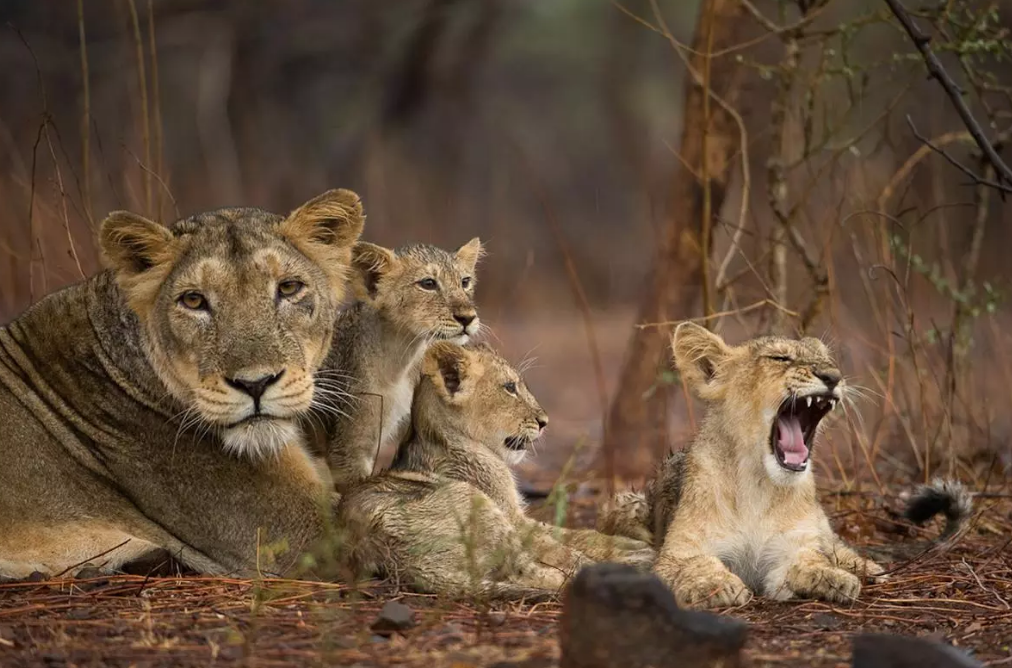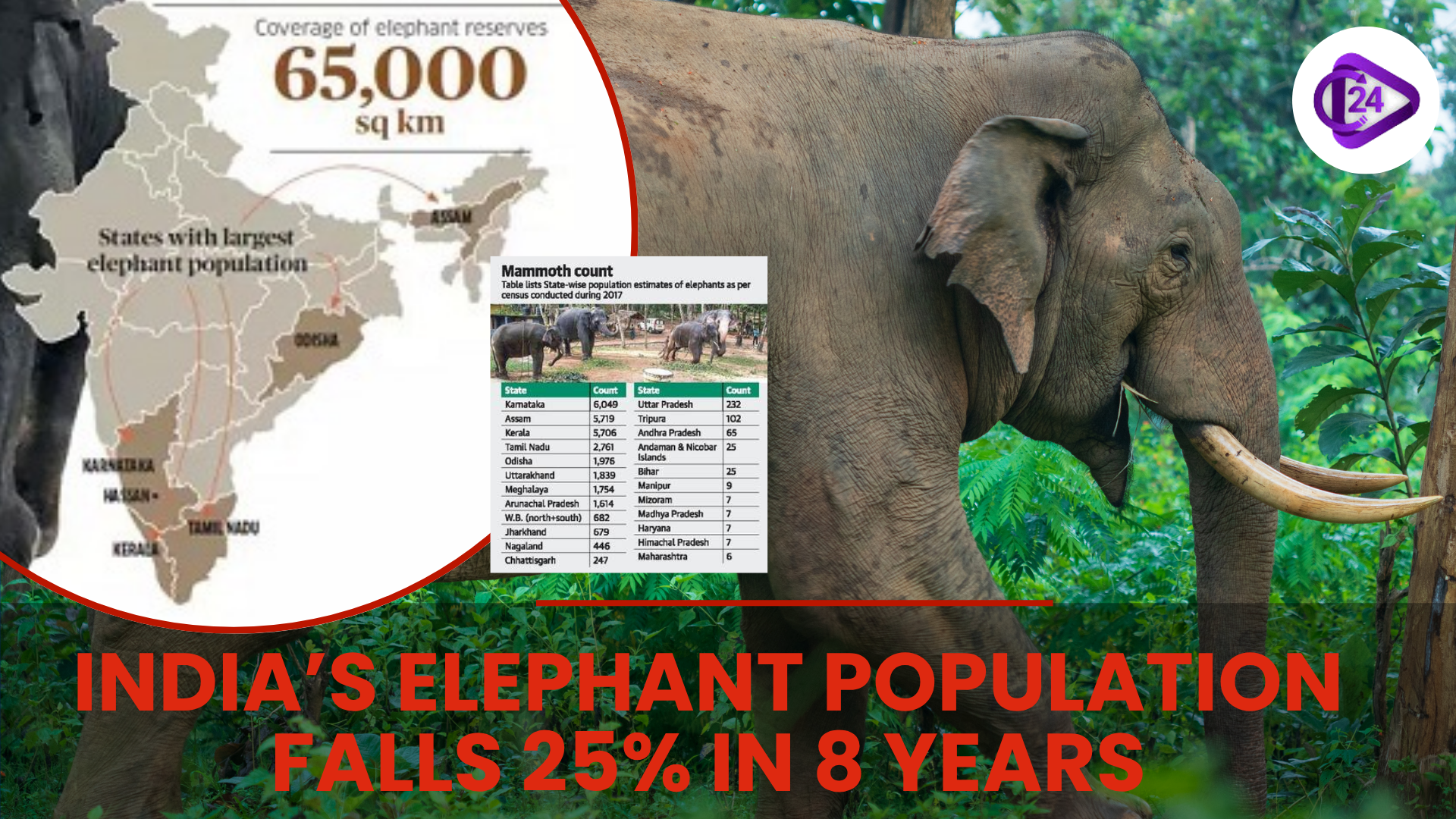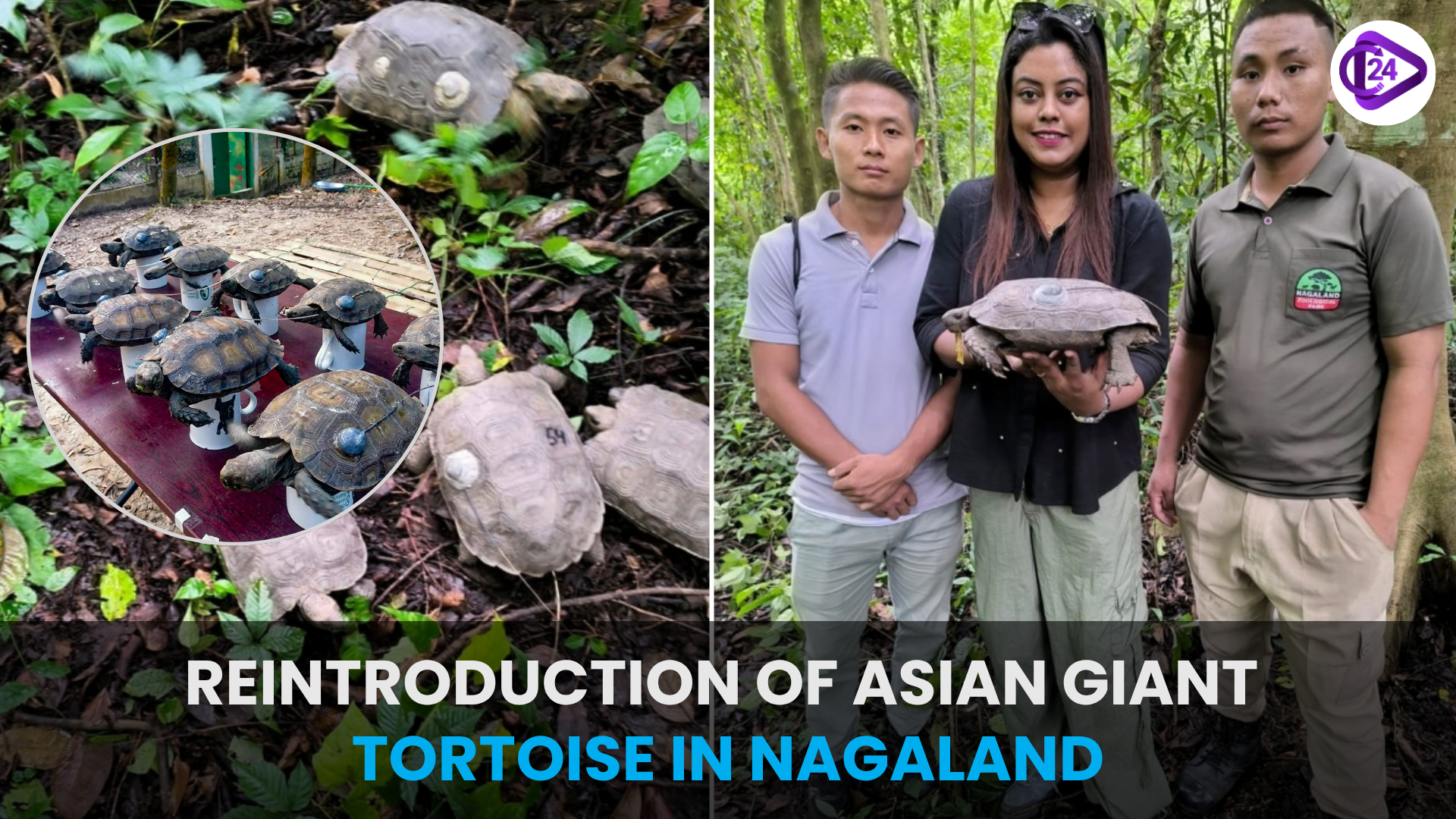
Gujarat's Project Asiatic Lion aims to protect and restore the habitat of Asiatic Lions in the Gir landscape. The initiative focuses on conservation, eco-development, and community participation. It also includes a global disease control center to ensure the species' health and sustainability. Since 2010, the lion population has increased from 411 to 674 due to these efforts. The project secures long-term survival while strengthening India's role in big cat conservation.
This initiative works to rehabilitate environmental habitats as well as create local enterprise options while building an international disease control center. Since 2010 the Asiatic Lion population has grown from 411 to 674 thus prompting the IUCN to upgrade their status to 'Endangered' in 2008. The national budget during 2023-24 shows an increased support of ₹155.53 Cr. The project secures both short-term and long-term survival of Asiatic Lions while protecting local biodiversity for India's position as a leader in big cat protection and establishing sustainable environments for future generations.
Introduction
-
The conservation effort of Asiatic Lions at Gir Landscape receives implementation through Project Lion in Gujarat.
-
The program implements conservation alongside eco-development by using a landscape ecology method.
Objectives of Project Lion (As per ‘Lion @ 47: Vision for Amrutkal’)
-
Habitat restoration serves as a solution for controlling the population growth of lions.
-
Community participation and livelihood generation.
-
A worldwide research center dedicated to big cat pathology diagnosis and treatment needs development.
-
Inclusive biodiversity conservation under the Project Lion initiative.
-
As South Asian conservation programs continue during the past decade the numbers of Asiatic Lions have increased.
Population Growth of Asiatic Lions (As per Gujarat Government)
|
Year |
Estimated Population |
|
2010 |
411 |
|
2015 |
523 |
|
2020 |
674 |
Conservation Status
-
The IUCN Red List categorized the species under Endangered status beginning from its previous label of Critically Endangered back in 2008.
-
Conservation measures and protection initiatives have resulted in population improvement.
-
Increased government financial investment reflects their dedication to supporting conservation projects in the region.
Financial Allocation of Lion Conservation (Last Three Years)
|
Year |
Funds Allocated (Cr) |
|
2021-22 |
91.03 |
|
2022-23 |
129.16 |
|
2023-24 |
155.53 |
Importance of Project Lion
-
The Asiatic Lion species can survive indefinitely because of this initiative.
-
Thanks to Project Lion the conservation strategies for habitats also improved with better controls on disease spread.
-
The program drives greater community involvement as well as local income generation possibilities.
-
Positions India as a global leader in big cat conservation.
Conclusion
The implementation of Project Lion represents an essential conservation measure to maintain Asiatic Lions' survival within Gujarat's Gir region. India advances its position as a worldwide leader in big cat conservation through combined habitat restoration with research and eco-development thus assuring the sustainability of Asiatic Lions and their habitat into the future.



 Cyclone Montha Makes Landfall Near Kakinada, Bringing Destruction to Andhra and Odisha
Cyclone Montha Makes Landfall Near Kakinada, Bringing Destruction to Andhra and Odisha India Conducts First-Ever DNA-Based Elephant Census, Reveals Population Decline by 25%
India Conducts First-Ever DNA-Based Elephant Census, Reveals Population Decline by 25% Maharashtra Gets India’s First Cooperative CBG Plant | 12 Tonnes Biogas Daily Production
Maharashtra Gets India’s First Cooperative CBG Plant | 12 Tonnes Biogas Daily Production Pulicat Fishermen Demand Long-Term Solution as Silt Threatens Lake and Livelihoods
Pulicat Fishermen Demand Long-Term Solution as Silt Threatens Lake and Livelihoods Reintroduction of Asian Giant Tortoise in Nagaland: A Step Towards Community-Led Biodiversity Conser
Reintroduction of Asian Giant Tortoise in Nagaland: A Step Towards Community-Led Biodiversity Conser Kaziranga in Assam Records Third-Highest Tiger Density in India
Kaziranga in Assam Records Third-Highest Tiger Density in India World Mangrove Day celebrated on 26th July
World Mangrove Day celebrated on 26th July Union Minister Inaugurates C-FLOOD: India’s Unified Inundation Forecasting System
Union Minister Inaugurates C-FLOOD: India’s Unified Inundation Forecasting System Indian-Made Chemotherapy Drugs Fail Quality Tests Globally
Indian-Made Chemotherapy Drugs Fail Quality Tests Globally Government to Launch ‘NAVYA’ Pilot Initiative for Skilling Adolescent Girls Under Viksit Bharat@2047
Government to Launch ‘NAVYA’ Pilot Initiative for Skilling Adolescent Girls Under Viksit Bharat@2047






